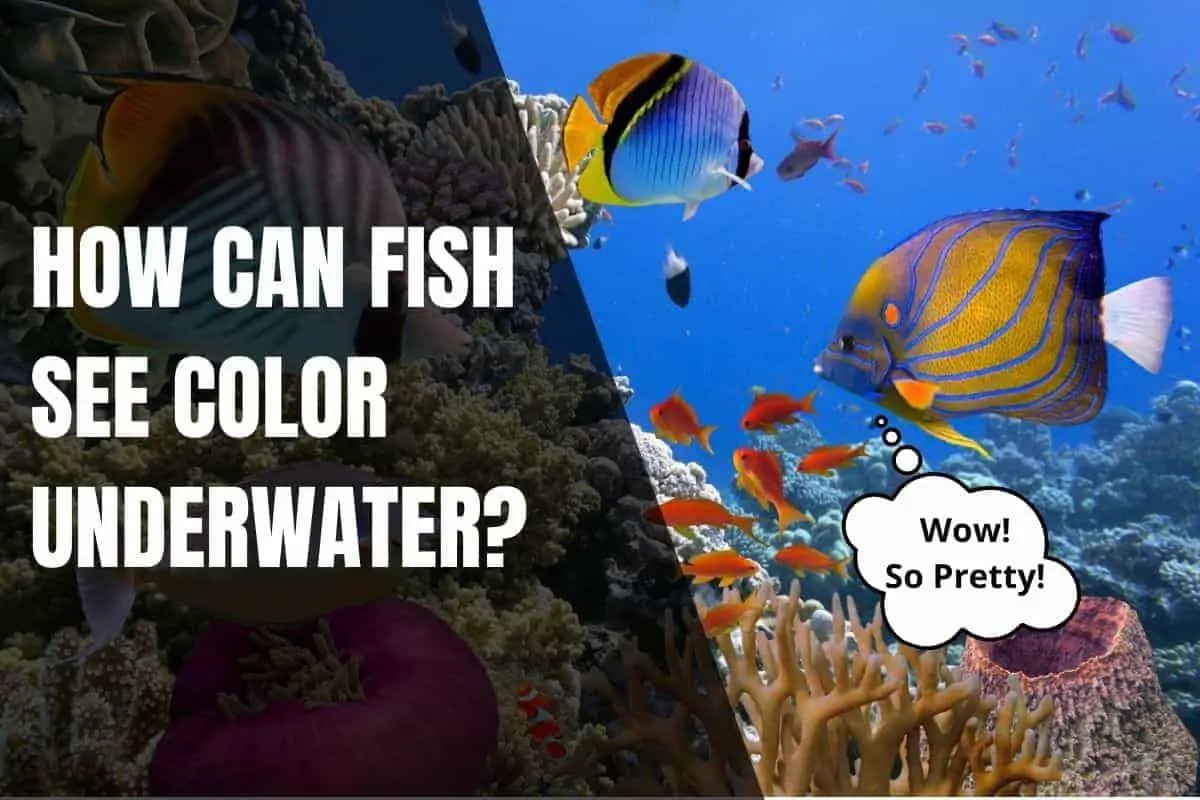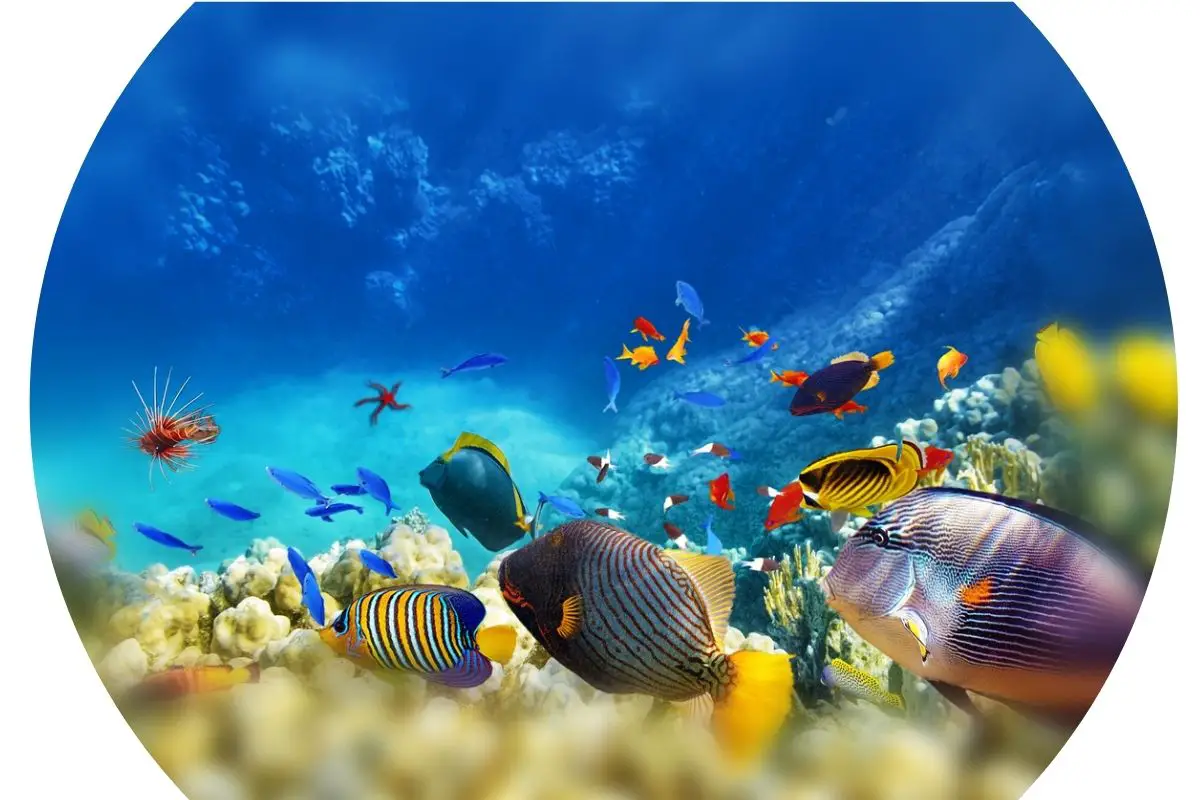Anglers are always looking for an advantage to help them put more fish in the boat, no matter how small. The best anglers take time to learn the different characteristics of the fish they’re targeting. Part of that learning process is understanding how fish see underwater and what color lures they’re most responsive to.
Like humans, fish have both rods and cones in their eyes, allowing them to see colors and contrast. While almost all fish can see color under ideal conditions, whether or not a particular color is visible depends on factors like depth, time of day, weather, and the color itself.
Read on as we cover some of the science behind how fish interact with color and the factors that affect whether or not a particular color is visible to fish.

What Role Does Light Play With Color?
Color and light have an incredibly close relationship. To understand how fish see color underwater, we must first understand how light interacts with color to affect the perception of color.
For color to appear, there are three different components at play: a light source, an object, and a receiver. The light source is the sun or moon, the object is your colorful fishing lure, and the receiver is the fish’s eye.
The light source emits wavelengths of visible light, which the object absorbs and then reflects outward. The wavelengths of the reflected light are how the receiver perceives color.
The intensity of the light source has a profound effect on how the receiver perceives color. This is an essential distinction because light has a harder time passing through water than air. As light enters the water, it loses intensity quickly, which affects the receiver’s perception of color.
This concept operates under the assumption that the light source is travelling through air. When light travels through water or glass, it bends and travels at a slower speed, known as refraction. Light refraction also affects how fish can perceive color.
Water depth is the final critical aspect of how light and color interact. Water provides much more resistance to light than air does; less light can penetrate as light travels deeper into the water.

How Do Fish See Colors Underwater?
While the entire color spectrum is visible at and just below the water’s surface, colors begin to disappear at depths greater than five feet. Some colors disappear faster than others, with red disappearing most quickly. The colors fade in reverse; they appear in the rainbow (think ROY G BV).
Polarization and Fish Perception
Polarization is a third component of the sense of sight beyond the ability to see objects and colors. Many fish have eyes that can detect polarization, and it influences how intensely and sharply they view colors and objects.
Light is typically transmitted along both the vertical and horizontal axis. When polarized, only light waves travelling along one of those two planes are transmitted to the eye. The resulting image is sharper, with greater contrast and a more pronounced color.
For predatory fish, polarization improves their sight and color perception and makes it easier to hunt. Scientists believe that polarization may also provide a means of cover for fleeing prey.
Fish Eye Structure
In many ways, the structure of a fish’s eye is quite similar to that of a human. A fish’s eye’s cornea, lens, and iris all loosely correspond to humans.
While the cornea of a fish has the same parts as our eyes, their cornea is spherical. To compensate for the refraction of water, fish corneas are roughly the same density as water, which results in less light bending than what you’d see through a human eye.
The lens of a fish’s eye is also spherical, which causes images to distort at the edges of a fish’s vision. The center of their eye produces a crisp and clear picture, which gets fuzzier as it extends into their peripheral vision.
The iris is the last critical component of a fish’s eye, and its structure also has a profound influence on how fish perceive color.
The iris comprises rods and cones, and these two components are critical to how a fish perceives objects. The cones are exceptionally sensitive to color, and they’re what allow both humans and fish to perceive color.
Rods are most sensitive to light, shape, and motion. These components are necessary for seeing contrast, and they allow fish to see in low light conditions. But, they can’t translate color information.
This means that while fish have no trouble seeing color in conditions where there’s enough light, they don’t see color nearly as well (or at all) in the dark. It also takes fish a significant amount of time to toggle between rods and cones, allowing their vision to adjust to an abrupt change in light conditions.
Many species will hide for several minutes to allow their eyes to adjust when there’s a significant change in light conditions.
Color Suggestions When Fishing
Now that we’ve covered the science that affects how fish see color underwater, it’s time to get to the fun part. Let’s talk about which colors are most effective when you’re out fishing.
What Color Attracts Fish?
While it would be nice to have an end-all-be-all list of colors that all fish are attracted to, it’s not so simple. While different species are undoubtedly attracted to some colors over other ones, what’s most important about attracting fish is their ability to see the color in the first place.
The best colors to use will differ depending on water and light conditions. In clear water with higher visibility, reach for the most natural and realistic colors you have. Translucent baits are a favorite of most species, as they look especially real underwater.
When visibility is high, “match the hatch” of the baitfish in the area, which means to use bait that most closely resembles the primary prey of your target species.
In muddy or stained water, when fishing at night or when bottom fishing at depths of over 30 feet, your best colors are usually the ones you can see from a mile away. Bold colors like black, neon colors like chartreuse, glow colors, and anything bright tend to fare best.
In these low visibility conditions, sight isn’t one of the primary senses a fish relies on when it decides to strike, so you don’t have to concern yourself as much with providing a natural presentation.
White and chartreuse baits and lures seem to perform incredibly well in virtually all water conditions. Many anglers reach for these two colors first as they begin to work a new body of water where they have no experience.
What Color Scares Fish Away?
Most anglers have their opinions of the best colors, as well as a list of colors they don’t like using. The truth is, there aren’t any colors that are inherently frightening to fish. Still, some colors will always work better than others, depending on the day-to-day changes of the environment.
What Color Is Hard For Fish To See?
Most fish have a developed sense of sight, and they can see the entire color spectrum that we see. The ability of fish to see color depends on the depth of the object and the amount of light penetrating the water.
If you’re fishing on an especially sunny day, or if the fish are holding in shallow water, they’ll see the entire color spectrum. If less light penetrates the water at greater depths, fewer colors will be visible. Red is the first color to disappear and will appear in darker shades of brown and black at depths below 25-feet.
Should You Be Using Fluorescent Colors When Fishing?
Fluorescent lures are an excellent way to add some flash to your presentation. Fluorescence relies on UV light, which is the majority of the light that penetrates the water’s surface. When light hits a fluorescent object, it changes its path, giving the object a sort of glow that can entice a fish to strike, especially in darker water and low light conditions.
Happy Fishing & Tight Lines
